It is no great secret that America is getting older. The birth rate in the U.S. has fallen by more than half since the early 1960s. Typical life expectancy in the U.S. has increased by around a decade over the same span. The last members of the Baby Boomer generation, which totals more than 75 million members, will hit their 60s starting in 2024. These developments are all pushing older Americans to be an increasingly large share of the population.
America’s aging has far-reaching implications for society and the economy. Older workers’ retirements will decrease the size of the labor force and potentially leave many positions unfilled. Their transition from paying into programs like Social Security and Medicare to drawing benefits from them will put strains on government budgets. Older Americans’ needs for health and social services will shape the economy as demand in those fields increases in the years to come. Their lifestyle preferences can determine where and how communities grow and provide necessities like housing and transportation.
In some respects, the shifts underway in the United States reflect common demographic patterns in developed economies. Across the world, upper-middle income and high-income countries tend to have the lowest fertility rates and longest life expectancies. With fewer new births and the existing population living longer, the average age of the population increases over time.
The World’s Largest Economies Are Aging Rapidly
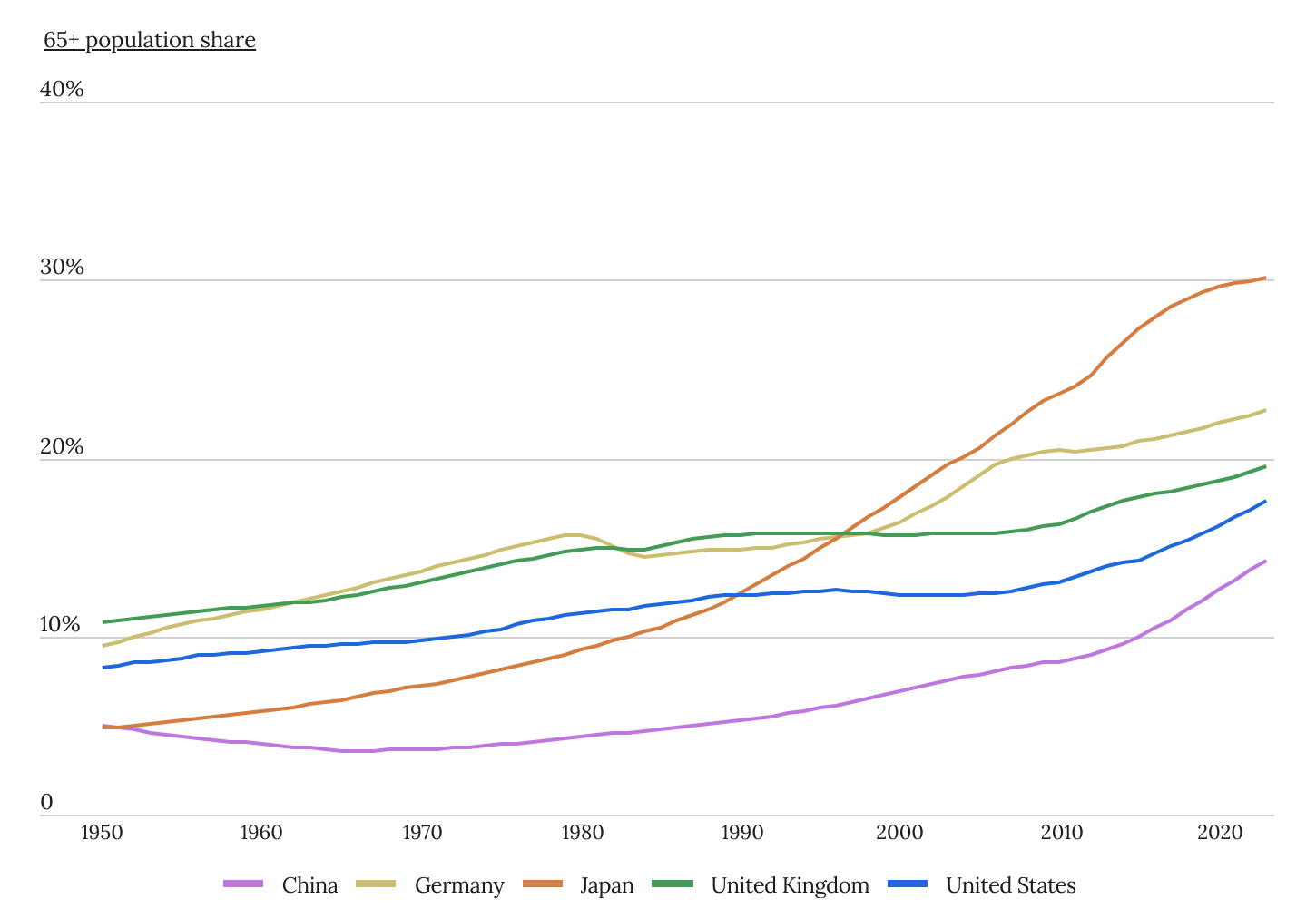
Source: U.S. Money Reserve analysis of United Nations’ Population Division
Data from other major economies confirms that the aging trends in the U.S. are no outlier. Germany and the United Kingdom have followed a similar trajectory as the United States, with the share of the 65-and-over population roughly doubling from the mid-20th century to now. And in Asia, the trends are even more dramatic. Japan has seen its 65-and-over population increase from less than 5% in the early 1950s to more than 30% today. The percentage of the population 65 and over in China has more than doubled since the turn of the century, from 6.9% in 2000 to 14.3% in 2023.
America’s 65+ Population Has Grown by More Than a Third Over the Past 10 Years

Source: U.S. Money Reserve analysis of U.S. Census Bureau American Community Survey 1- Year Estimates (2012–2022)
While the aging pattern of the U.S. is consistent with that of other developed economies, the Baby Boomer generation is one of the primary reasons for the rapid growth of the senior population in the U.S. over the last decade. More than 75 million Americans were born between 1946 and 1964, and as the members of that group have reached the later years of their lives, America’s population of seniors has increased as a result.
From 2012 (the year after the first Baby Boomers turned 65) to 2022, America’s oldest age cohorts had the fastest growth rates across both men and women. Over this period, the percentage of the U.S. population 65 and over increased from 13.7% to 17.3%—a 3.6 percentage point gain. At the same time, all age cohorts under 30 experienced a decline in their population shares.
The Northeast Corner of the U.S. Is Aging Most Rapidly
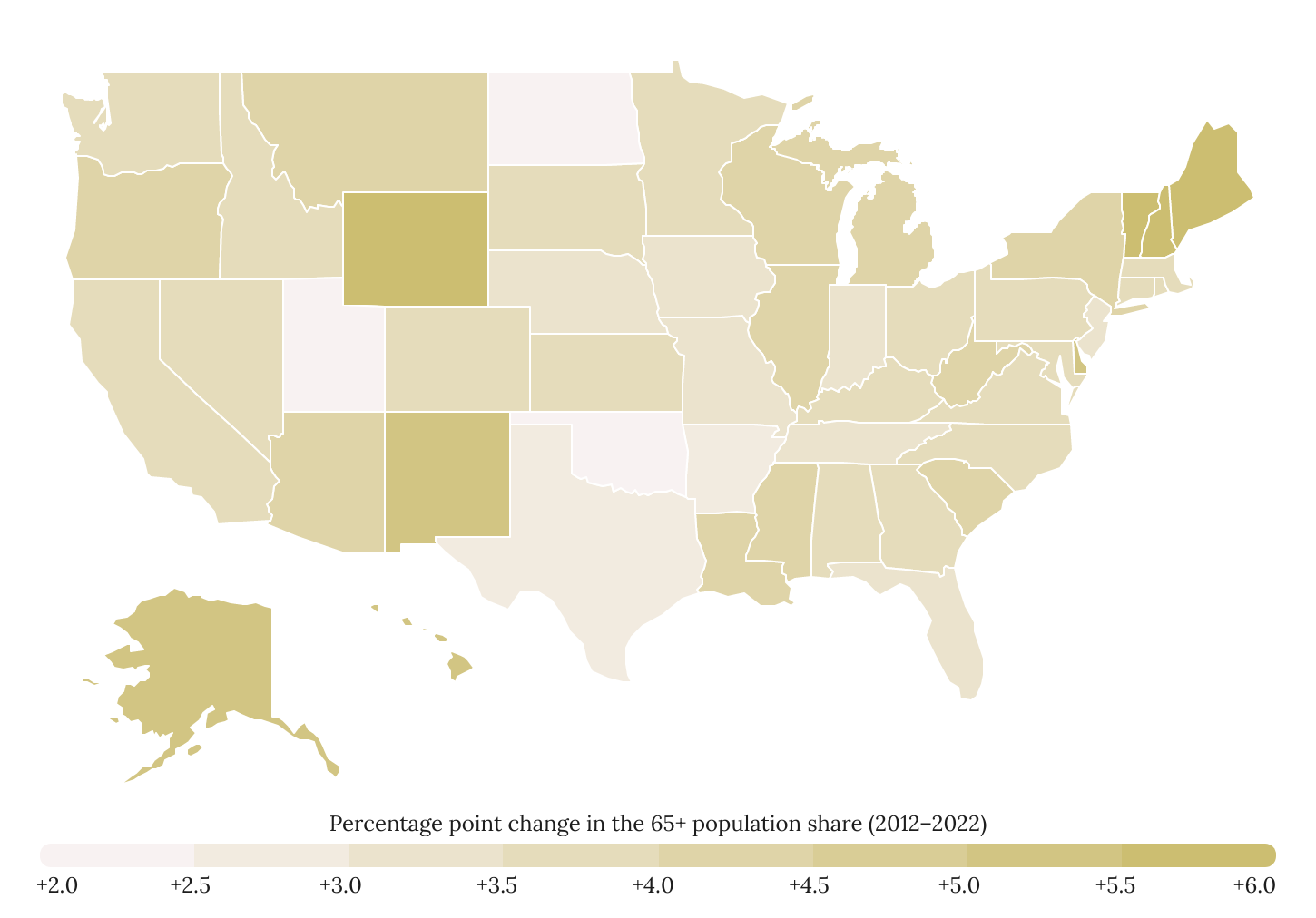
Source: U.S. Money Reserve analysis of U.S. Census Bureau American Community Survey 1- Year Estimates (2012–2022)
Within the U.S., some regions are aging more rapidly than others. In particular, the New England states of Vermont, New Hampshire, and Maine stand out for the rapid growth in their 65-and-over population. Vermont leads the nation with a 5.9 percentage point increase in its senior population between 2012 and 2022, followed closely by Maine at 5.6 and New Hampshire at 5.5. Western states including Wyoming (+5.6 percentage points), Hawaii (+5.4), and Alaska (+5.3) also rank highly for their rates of growth.
At the local level, the most rapidly aging cities in the U.S. are spread throughout the country. In some cases, Sun Belt destinations are proving to be attractive retirement locations that are bringing more older Americans into the population. In others, economic decline has limited the number of younger people moving in or families adding children, allowing the existing older population to grow.
Below is a breakdown of the most rapidly aging cities grouped by size. The analysis was conducted by U.S. Money Reserve using data from the U.S. Census Bureau. For more information on how the analysis was conducted, refer to the methodology section.
The Most & Least Rapidly Aging Large U.S. Cities
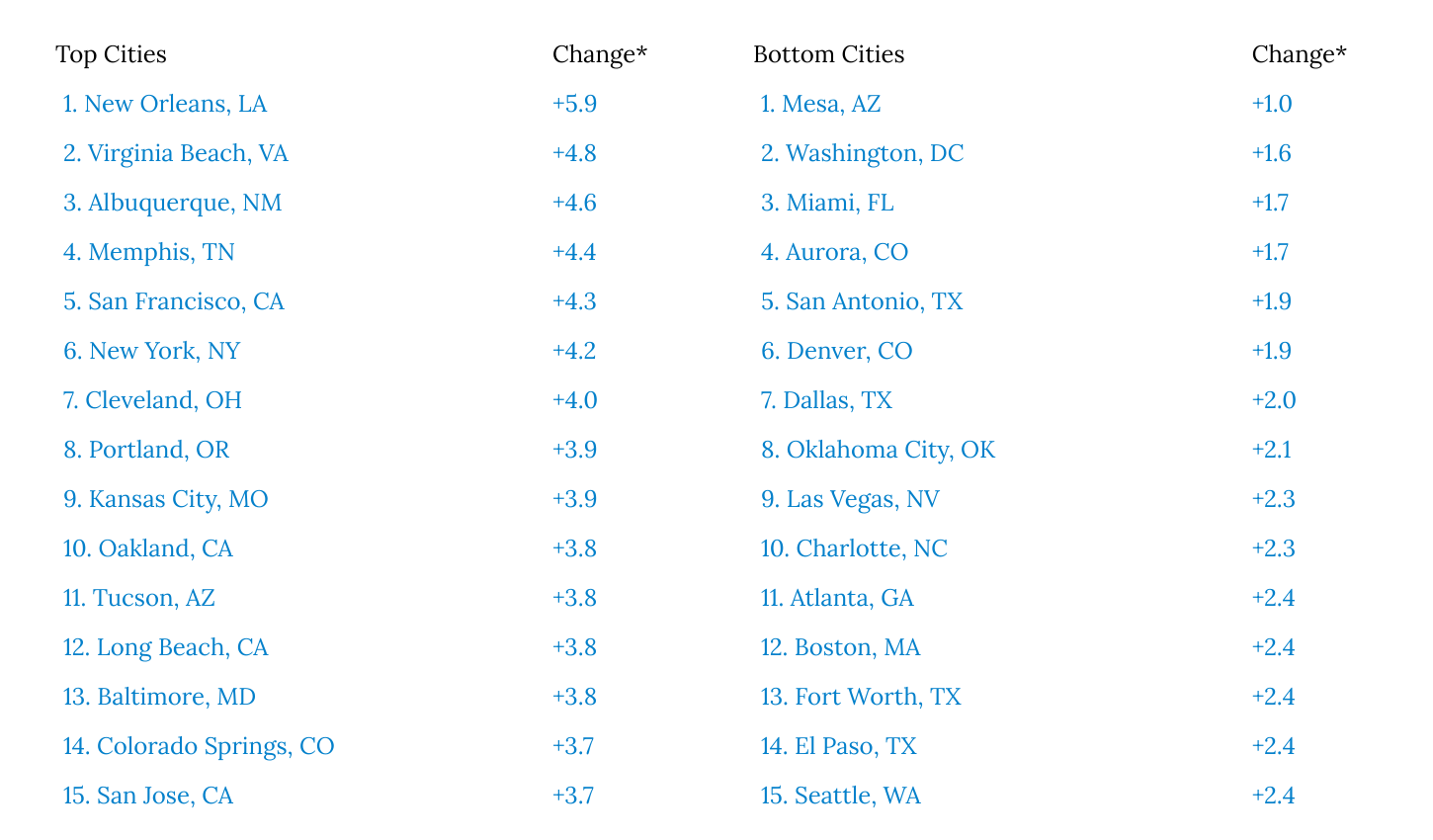
*Percentage point change in the 65+ population share
The Most & Least Rapidly Aging Midsize U.S. Cities
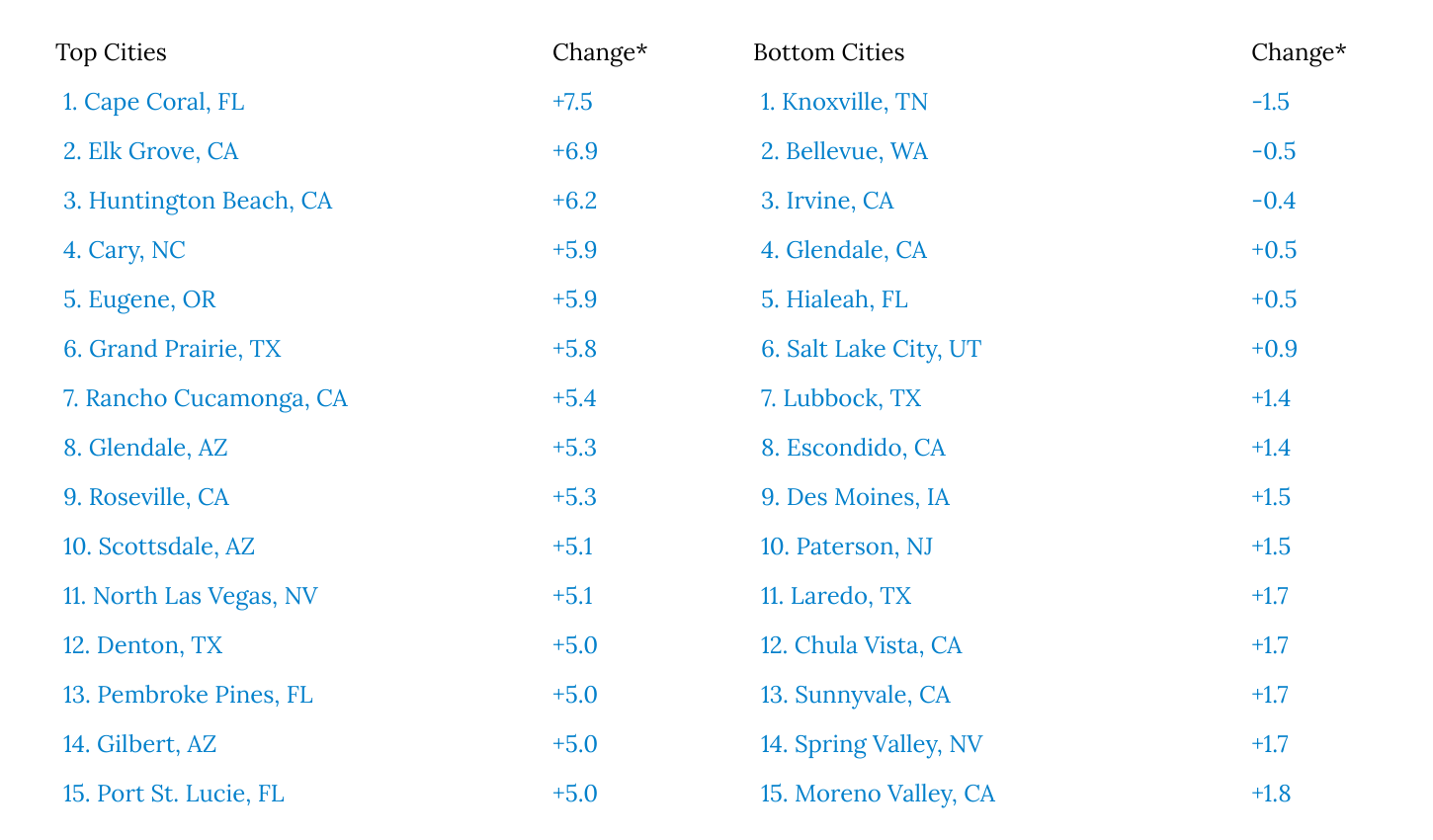
*Percentage point change in the 65+ population share
The Most & Least Rapidly Aging Small U.S. Cities
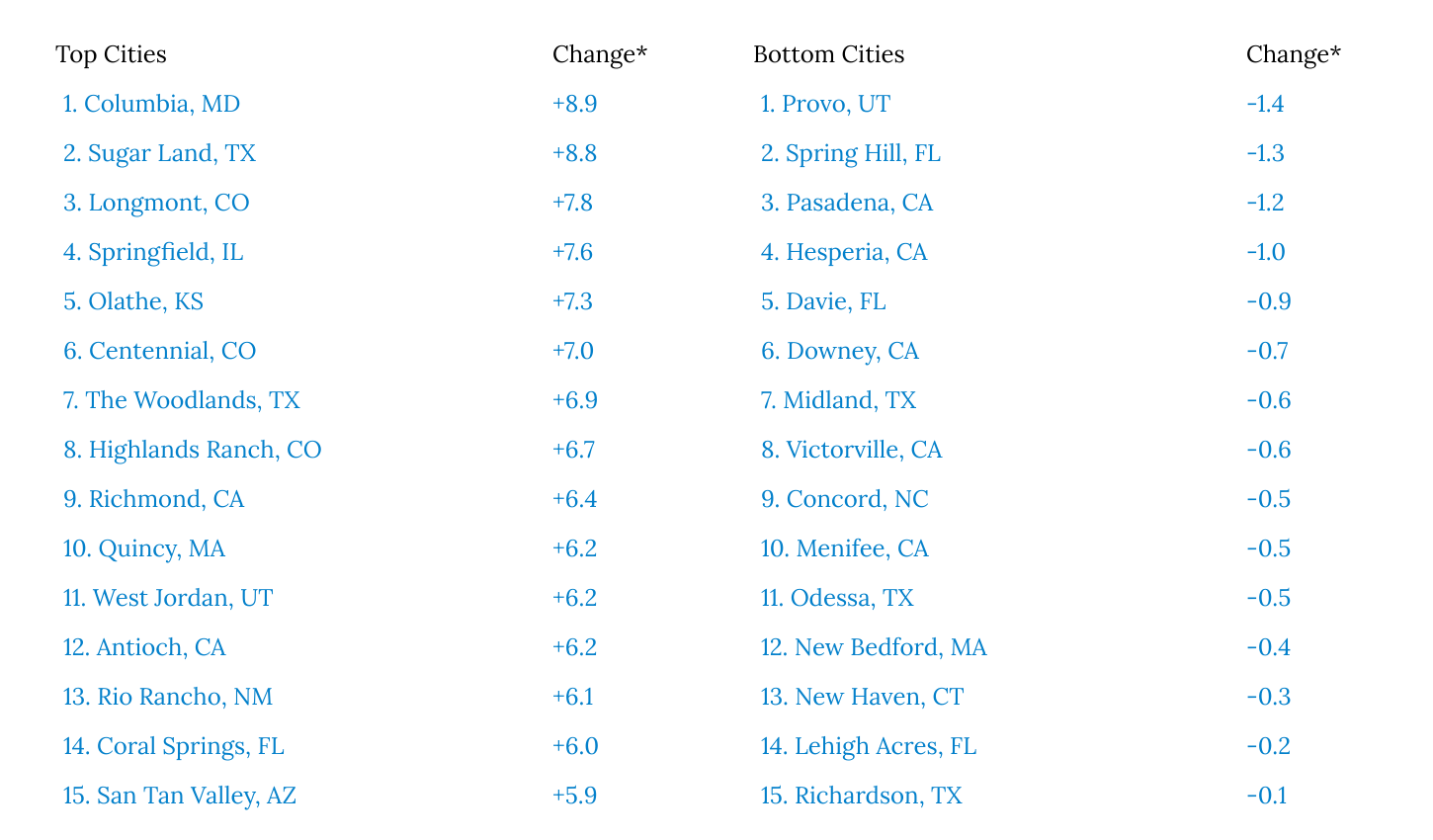
*Percentage point change in the 65+ population share
The Most & Least Rapidly Aging U.S. States
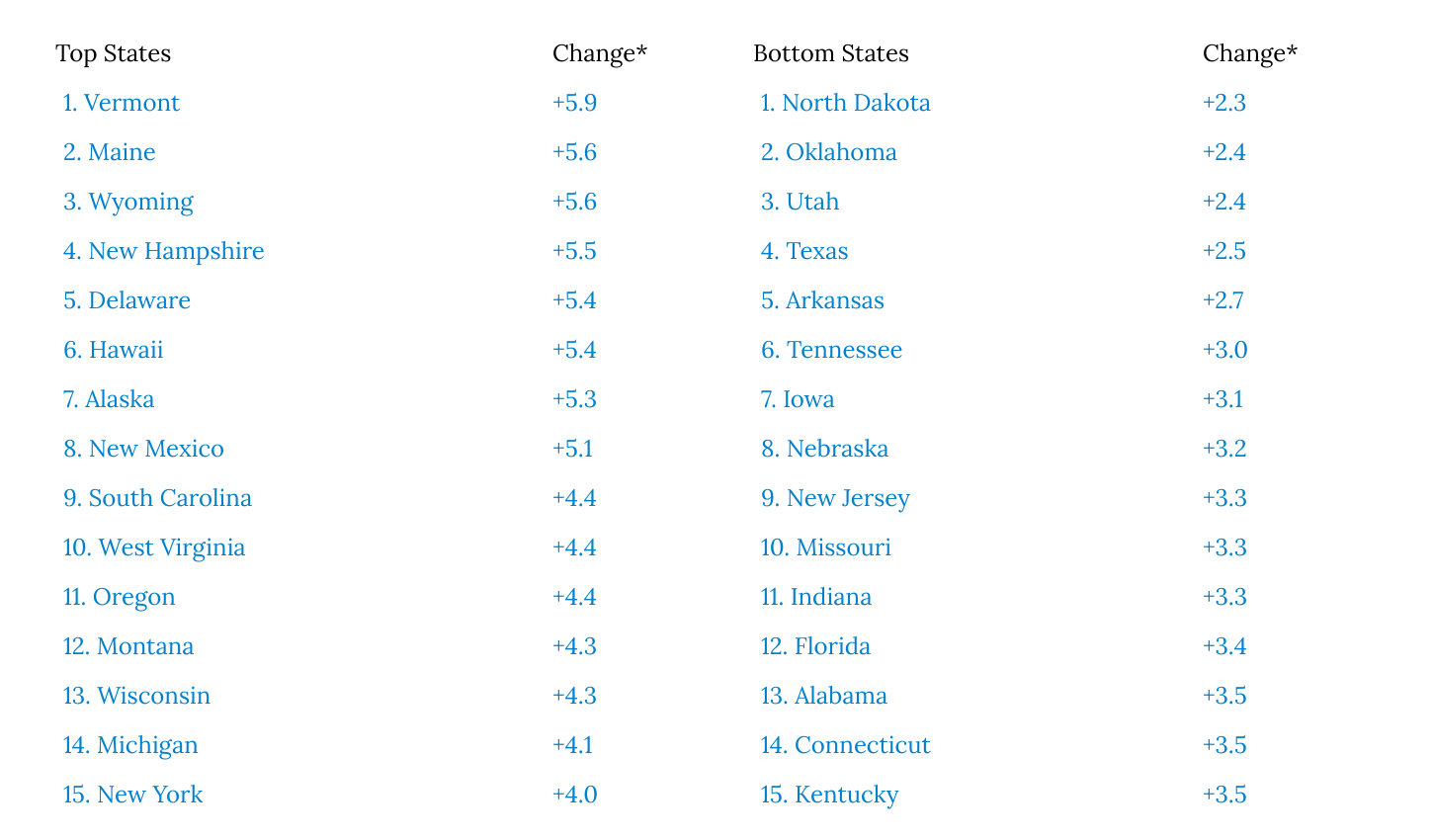
*Percentage point change in the 65+ population share
Methodology

The data used in this analysis is from the U.S. Census Bureau’s American Community Survey 1-Year Estimates. To determine the most rapidly aging locations in the U.S., researchers calculated the percentage point change in the 65-and-over population proportion between 2012 and 2022. In the event of a tie, the location with the greater percentage change in the 65-and-over total population was ranked higher. To improve relevance, only cities with at least 100,000 people were included. Additionally, cities were grouped into cohorts based on population size: small (100,000–149,999), midsize (150,000–349,999), and large (1,000,000+).
For complete results, see America’s Most Rapidly Aging Cities on US Money Reserve.
